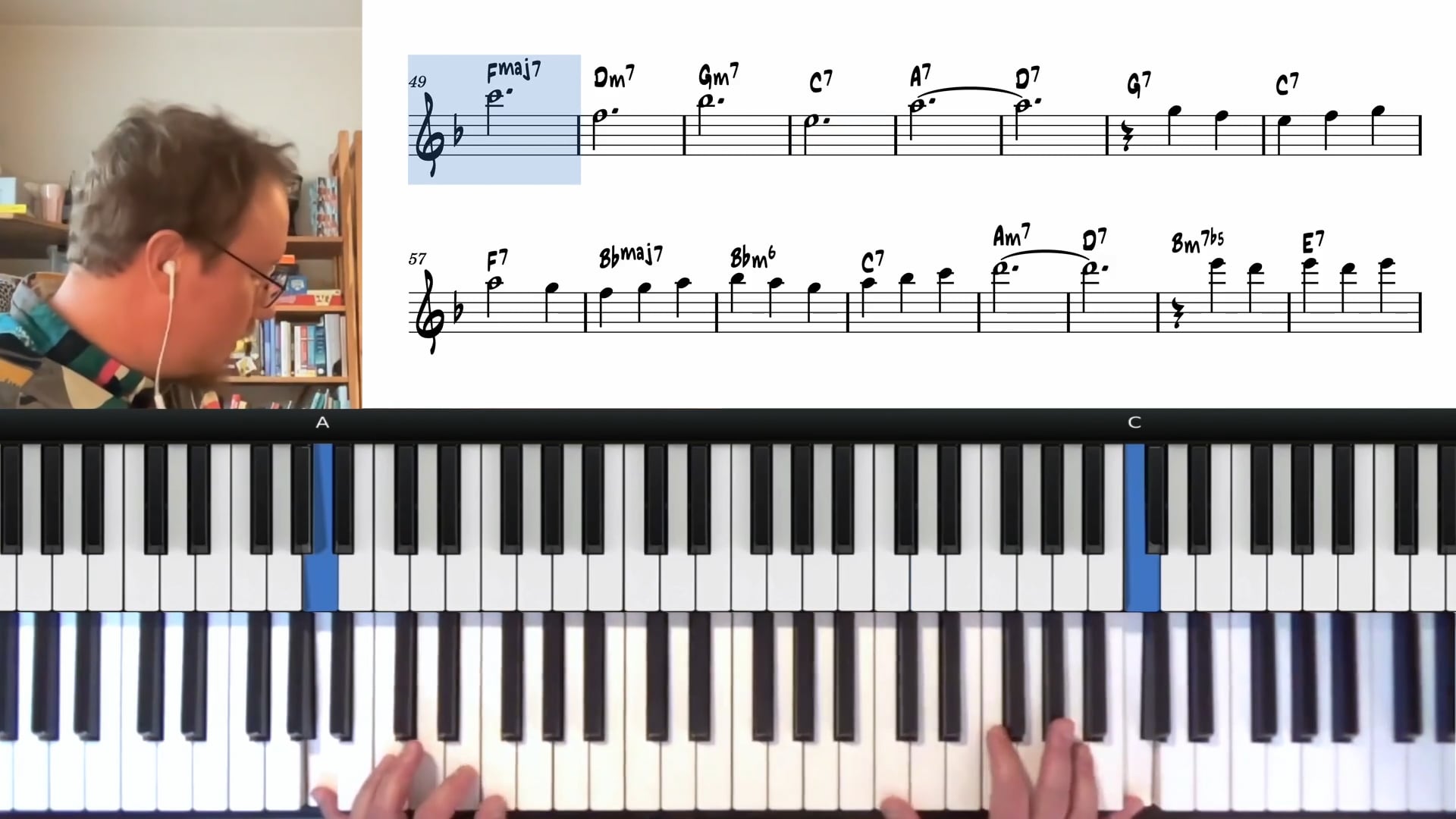
Tuomo Uusitalo
Tuomo is an award-winning pianist, composer, arranger and educator. Having released two albums as a leader, he has established himself in the New York jazz scene and continues touring internationally both as a leader as well as sideman.
Seminar Description
Seminar Description
Bill Evans Workshop – Essential Recordings & Transcriptions
Welcome to our annual Bill Evans workshop! This session is dedicated to exploring the artistry of Bill Evans, one of the most influential jazz pianists of all time. We’ll delve into five essential recordings, analyze key transcriptions, and uncover the harmonic and rhythmic techniques that define his unique sound. Whether you’re a beginner or an experienced player, this lesson will help deepen your understanding of Evans’ approach to jazz piano.
Essential Bill Evans Recordings
1. New Jazz Conceptions
This album marked Evans’ debut as a leader and features his first trio recordings. His harmonic sophistication and rhythmic phrasing were already well-developed, and tracks like "Five" introduce his signature use of polyrhythms. The tune is based on a rhythm changes progression, but Evans adds unique phrasing and voicing techniques that make it stand out.
2. Portrait in Jazz
This pivotal trio album with Scott LaFaro and Paul Motian set a new standard for jazz piano trios. The interplay between the musicians demonstrated a more interactive approach to group improvisation. The transcription of Evans’ solo on "Autumn Leaves" from this album is a masterclass in melodic development and chordal comping.
3. Explorations
Considered by Evans himself to be his best trio album, Explorations captures the depth of his harmonic imagination. The trio’s version of "Beautiful Love" showcases his rich voicings and creative reharmonization techniques.
4. Waltz for Debby
Recorded live at the Village Vanguard, this album is one of the most beloved jazz trio recordings. It features intimate and expressive performances that highlight Evans’ ability to create lyrical, flowing improvisations.
5. Solo Sessions
These recordings provide a rare look at Evans in a completely unaccompanied setting. His interpretations of ballads like "When I Fall in Love" and "Like Someone in Love" demonstrate his full command of harmonic textures and voice-leading.
Analyzing Bill Evans’ Transcriptions
"Autumn Leaves" – Portrait in Jazz
This transcription of Evans’ solo reveals his melodic use of chord tones and approach notes. His comping patterns emphasize syncopation, often accenting on the "&" of beats 1 and 3—a distinctive trait of his playing.
"April in Paris" – Solo Sessions
A perfect example of Evans’ harmonic sophistication. He frequently substitutes traditional ii-V progressions with minor 7th flat 5 chords, creating a more nuanced sound. This piece also showcases his seamless blending of drop-2 voicings and chromatic movement.
"When I Fall in Love" – Solo Sessions
Here, Evans employs dominant chains and reharmonization to add harmonic depth. He also uses his signature three-note spread voicings, moving them chromatically for tension and resolution.
"Like Someone in Love" – Solo Sessions
This transcription highlights his use of quartal voicings in a more delicate, lyrical context. His ability to maintain the melody’s clarity while adding inner harmonic movement is a hallmark of his style.
Key Takeaways & Practice Tips
-
Master 1-6-2-5 Progressions – Evans frequently used rhythm changes and dominant chains to create harmonic movement. Practice playing these in multiple keys.
-
Explore Spread Voicings – Three-note spread voicings help maintain clarity in a solo piano setting. Focus on playing the 3rd and 7th in the left hand while keeping the melody in the right hand.
-
Develop a Lyrical Approach to Solos – Instead of running scales, emphasize chord tones and approach notes. This creates a more natural and melodic improvisation style.
-
Experiment with Quartal Voicings – Evans used fourth-based voicings not just for modern sound, but also for their ability to blend smoothly with melodies. Practice applying these to standard progressions.
- Focus on Rhythmic Comping – Try playing comping patterns on the "&" of beats 1 and 3, as Evans often did. This creates a floating, interactive feel in both solo and trio settings.
Conclusion
Bill Evans’ approach to jazz piano is a rich source of inspiration for any musician. By studying his recordings and transcriptions, we can learn how to create beautiful, harmonically rich arrangements while maintaining a deep sense of melody and rhythm. Explore these concepts in your own playing, and don’t forget to experiment with different voicing techniques to develop your personal sound.
Happy practicing!





